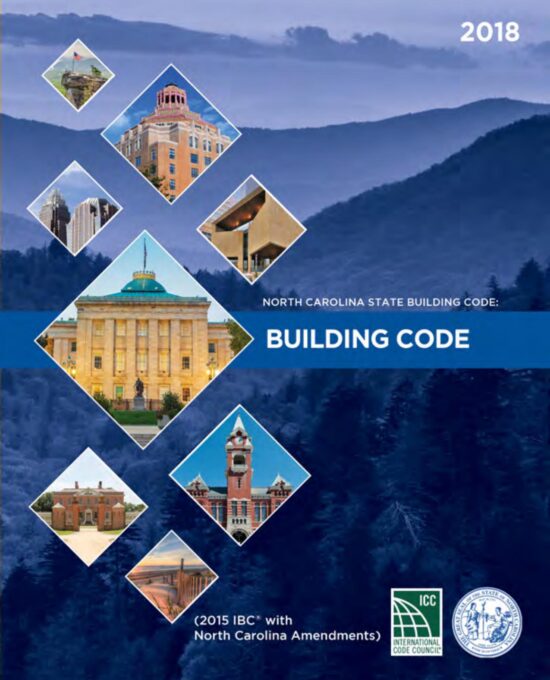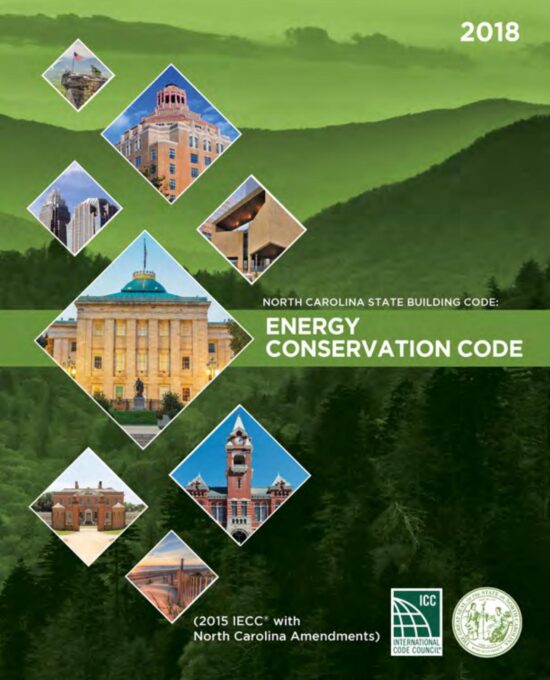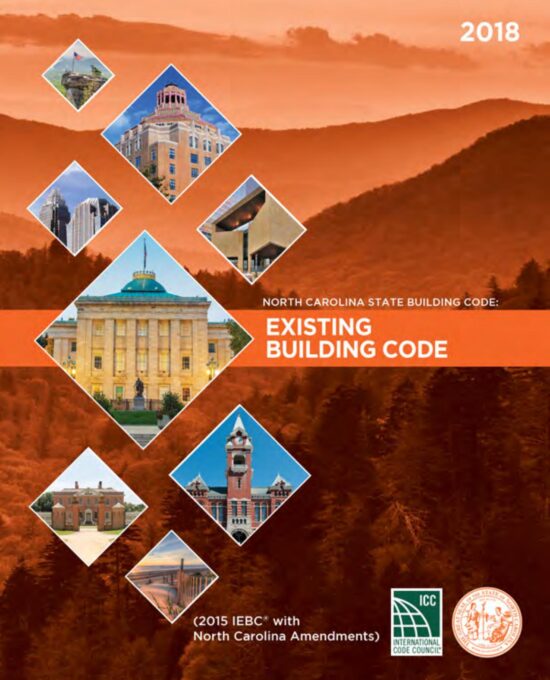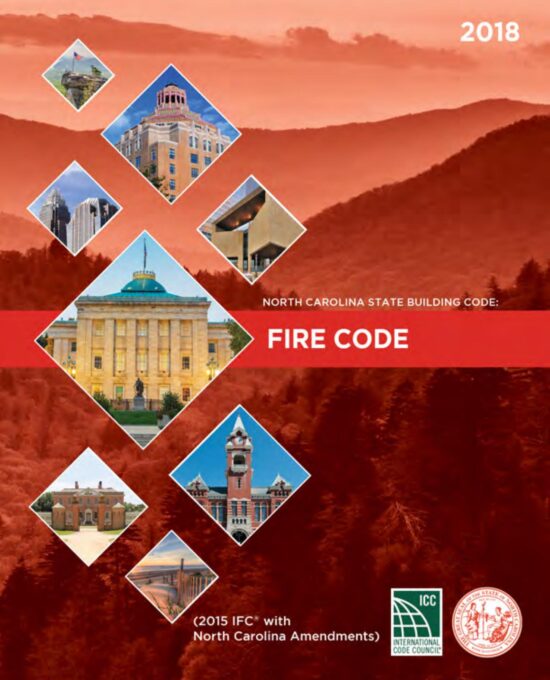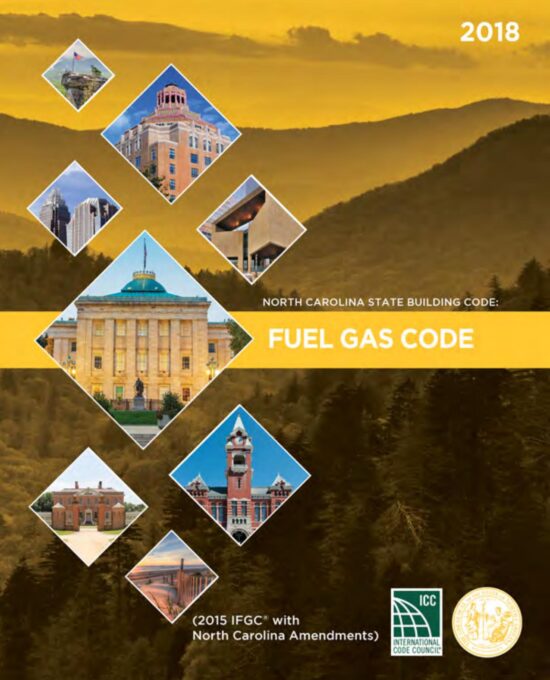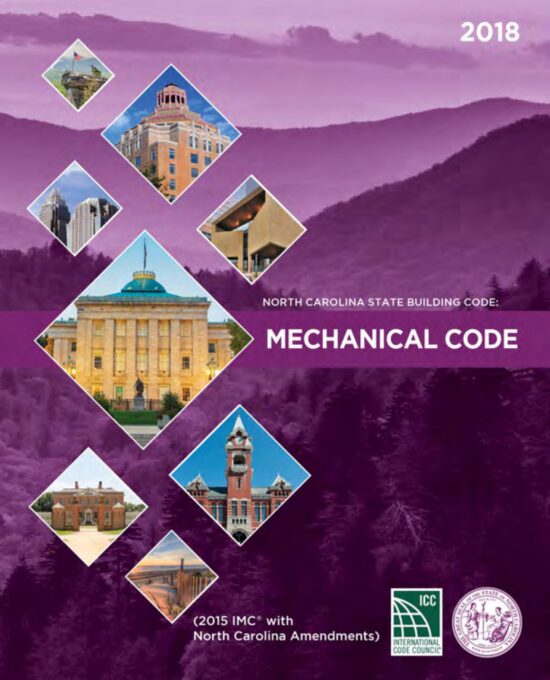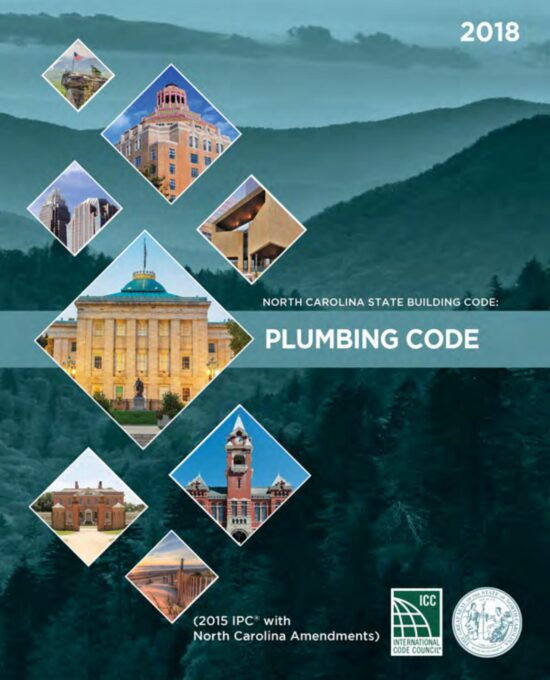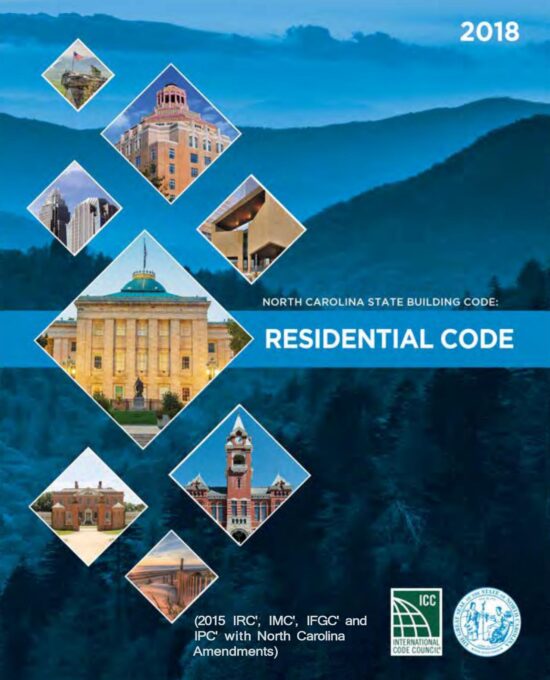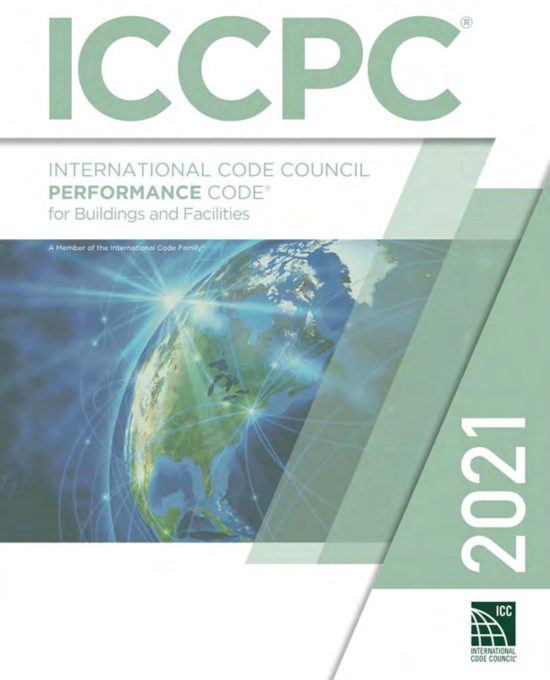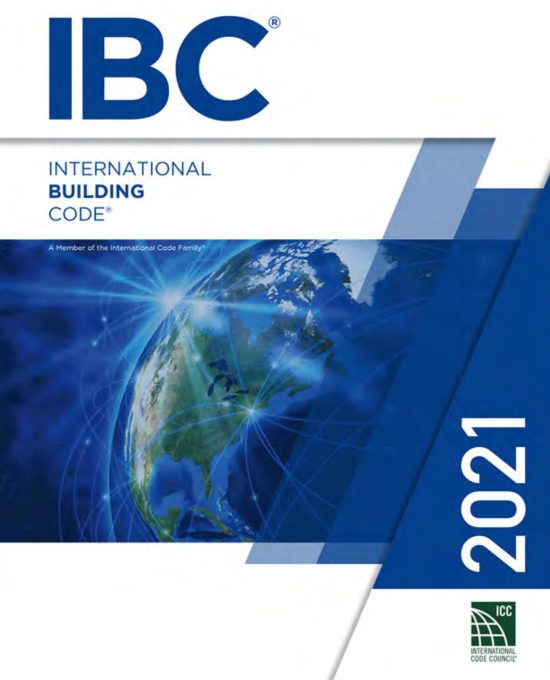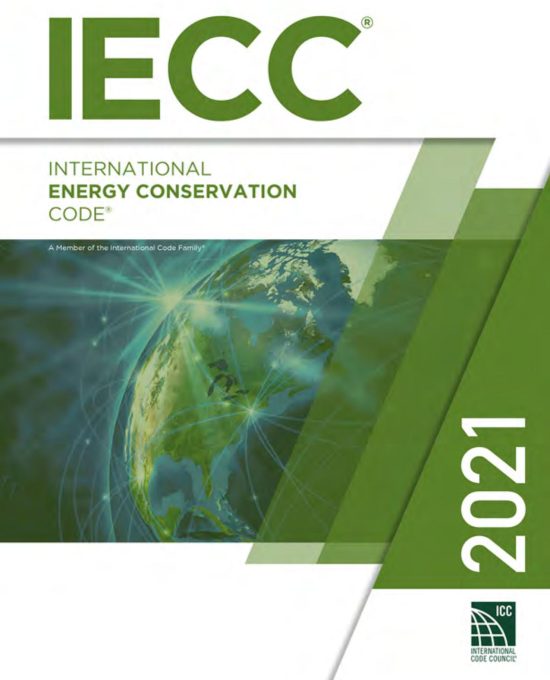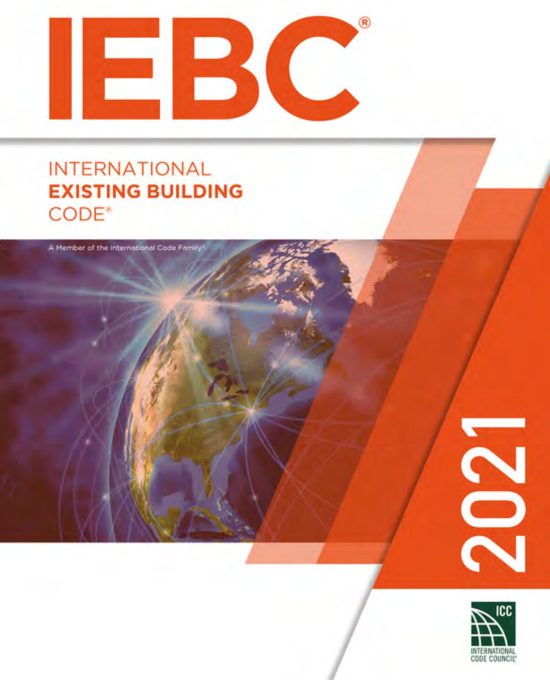2018 North Carolina State Building Code: Building Code (NCBC) – Based on 2015 IBC with North Carolina Amendments
- Adapted from the 2015 IBC with comprehensive North Carolina amendments
- Applies to all commercial and multifamily buildings statewide
- Includes detailed requirements for occupancy classification, egress, structural systems, and fire protection
- Integrates with other I-Codes for mechanical, plumbing, energy, and electrical systems
- Outlines permitting, inspection, and enforcement procedures specific to North Carolina
- Accounts for regional hazards and local code priorities
- Promotes consistent code interpretation and compliance statewide
NCBC-2018
2018 North Carolina State Building Code: Building Code (NCBC) – Based on 2015 IBC with North Carolina Amendments
- Adapted from the 2015 IBC with comprehensive North Carolina amendments
- Applies to all commercial and multifamily buildings statewide
- Includes detailed requirements for occupancy classification, egress, structural systems, and fire protection
- Integrates with other I-Codes for mechanical, plumbing, energy, and electrical systems
- Outlines permitting, inspection, and enforcement procedures specific to North Carolina
- Accounts for regional hazards and local code priorities
- Promotes consistent code interpretation and compliance statewide
NCBC-2018
2018 North Carolina State Building Code: Energy Conservation Code
- Divided into Commercial (Chapters C1–C6) and Residential (Chapters R1–R6) provisions
- Defines performance-based and prescriptive compliance paths
- Adapts 2015 IECC content with state-specific modifications and appendices
- Includes energy efficiency requirements for lighting, HVAC, insulation, fenestration, and systems commissioning
- Specifies requirements for additions, alterations, repairs, and changes of occupancy
- Incorporates dedicated appendices for residential air/duct leakage testing and high-efficiency options
- References ASHRAE, ANSI, and ICC standards applicable to North Carolina codes
- Provides worksheets, diagrams, and compliance tools for residential applications
NCECC-2018
2018 North Carolina State Building Code: Energy Conservation Code
- Divided into Commercial (Chapters C1–C6) and Residential (Chapters R1–R6) provisions
- Defines performance-based and prescriptive compliance paths
- Adapts 2015 IECC content with state-specific modifications and appendices
- Includes energy efficiency requirements for lighting, HVAC, insulation, fenestration, and systems commissioning
- Specifies requirements for additions, alterations, repairs, and changes of occupancy
- Incorporates dedicated appendices for residential air/duct leakage testing and high-efficiency options
- References ASHRAE, ANSI, and ICC standards applicable to North Carolina codes
- Provides worksheets, diagrams, and compliance tools for residential applications
NCECC-2018
2018 North Carolina State Building Code: Existing Building Code
- Integrates North Carolina amendments to the 2015 IEBC for localized enforcement
- Offers three compliance methods: Prescriptive, Work Area, and Performance-based
- Provides rules for repairs, Level 1–3 alterations, additions, historic buildings, and relocated structures
- Includes accessibility provisions and seismic retrofit guidelines
- Enables flexible design options while maintaining public safety
- Structured to align with other I-Codes for holistic code integration
- Applies to commercial, industrial, and multi-unit residential buildings undergoing rehabilitation
NCEBC-2018
2018 North Carolina State Building Code: Existing Building Code
- Integrates North Carolina amendments to the 2015 IEBC for localized enforcement
- Offers three compliance methods: Prescriptive, Work Area, and Performance-based
- Provides rules for repairs, Level 1–3 alterations, additions, historic buildings, and relocated structures
- Includes accessibility provisions and seismic retrofit guidelines
- Enables flexible design options while maintaining public safety
- Structured to align with other I-Codes for holistic code integration
- Applies to commercial, industrial, and multi-unit residential buildings undergoing rehabilitation
NCEBC-2018
2018 North Carolina State Building Code: Fire Code (NCFC)
The 2018 North Carolina State Building Code: Fire Code (NCFC) is a state-adopted adaptation of the 2015 International Fire Code®, enhanced with North Carolina-specific amendments. This code establishes minimum requirements to safeguard life, property, and public welfare from fire, explosion, and related hazards in all buildings and premises.
Designed for use by fire officials, code enforcers, architects, engineers, and contractors, the NCFC provides a comprehensive framework for fire prevention and protection systems. It ensures compliance through both prescriptive measures and performance-based design options applicable to new and existing structures.
Highlights:
- Integrates provisions from the 2015 International Fire Code® with North Carolina-specific modifications
- Addresses fire safety for construction, storage, occupancy use, and hazardous materials handling
- Regulates fire alarm systems, sprinklers, extinguishers, and egress pathways
- Enforces standards for emergency preparedness, fire command centers, and fire service access
- Includes clear rules for combustible storage, flammable finishes, and fuel dispensing systems
- Provides inspection, permitting, and enforcement protocols
- Covers special occupancies such as marinas, high-piled storage, and industrial operations
- Includes adoptable appendices on hydrant spacing, firefighter air systems, and hazardous materials
Who It’s For:
Fire marshals, building inspectors, design professionals, and public safety officials engaged in the development, renovation, or inspection of facilities in North Carolina. Ensures uniform fire code enforcement and enhances fire and life safety across the state.
NCFC-2018
2018 North Carolina State Building Code: Fire Code (NCFC)
The 2018 North Carolina State Building Code: Fire Code (NCFC) is a state-adopted adaptation of the 2015 International Fire Code®, enhanced with North Carolina-specific amendments. This code establishes minimum requirements to safeguard life, property, and public welfare from fire, explosion, and related hazards in all buildings and premises.
Designed for use by fire officials, code enforcers, architects, engineers, and contractors, the NCFC provides a comprehensive framework for fire prevention and protection systems. It ensures compliance through both prescriptive measures and performance-based design options applicable to new and existing structures.
Highlights:
- Integrates provisions from the 2015 International Fire Code® with North Carolina-specific modifications
- Addresses fire safety for construction, storage, occupancy use, and hazardous materials handling
- Regulates fire alarm systems, sprinklers, extinguishers, and egress pathways
- Enforces standards for emergency preparedness, fire command centers, and fire service access
- Includes clear rules for combustible storage, flammable finishes, and fuel dispensing systems
- Provides inspection, permitting, and enforcement protocols
- Covers special occupancies such as marinas, high-piled storage, and industrial operations
- Includes adoptable appendices on hydrant spacing, firefighter air systems, and hazardous materials
Who It’s For:
Fire marshals, building inspectors, design professionals, and public safety officials engaged in the development, renovation, or inspection of facilities in North Carolina. Ensures uniform fire code enforcement and enhances fire and life safety across the state.
NCFC-2018
2018 North Carolina State Building Code: Fuel Gas Code (NCFGC-2018)
The 2018 North Carolina State Building Code: Fuel Gas Code (NCFGC) integrates the 2015 International Fuel Gas Code® with state-specific amendments to regulate the design, installation, maintenance, and inspection of fuel gas systems. It establishes safety standards for natural and LP-gas systems across residential and commercial buildings, excluding utility infrastructure upstream of the point of delivery.
This edition ensures compatibility with the full family of I-Codes® and emphasizes both prescriptive and performance-based approaches to address gas piping, appliances, combustion air, venting, and hydrogen systems. With clear administrative provisions and detailed technical criteria, it supports safe, efficient, and code-compliant fuel gas infrastructure statewide.
Highlights:
- Applies to natural gas (≤125 psig) and LP-gas (≤20 psig) systems
- Covers piping, shutoff valves, appliances, combustion air, and venting
- Chapter-based structure includes general regulations, appliance-specific criteria, and gaseous hydrogen provisions
- Aligns with mechanical and residential codes for crossover consistency
- Appendices provide gas pipe sizing, vent system design, and safety inspection procedures
- North Carolina-specific deletions and modifications for administrative sections
- Supports engineers, inspectors, and contractors through enforceable guidance
Who It’s For:
Mechanical contractors, design professionals, inspectors, and code officials in North Carolina responsible for safe installation and maintenance of gas piping and appliance systems in compliance with state-adopted standards.
NCFGC-2018
2018 North Carolina State Building Code: Fuel Gas Code (NCFGC-2018)
The 2018 North Carolina State Building Code: Fuel Gas Code (NCFGC) integrates the 2015 International Fuel Gas Code® with state-specific amendments to regulate the design, installation, maintenance, and inspection of fuel gas systems. It establishes safety standards for natural and LP-gas systems across residential and commercial buildings, excluding utility infrastructure upstream of the point of delivery.
This edition ensures compatibility with the full family of I-Codes® and emphasizes both prescriptive and performance-based approaches to address gas piping, appliances, combustion air, venting, and hydrogen systems. With clear administrative provisions and detailed technical criteria, it supports safe, efficient, and code-compliant fuel gas infrastructure statewide.
Highlights:
- Applies to natural gas (≤125 psig) and LP-gas (≤20 psig) systems
- Covers piping, shutoff valves, appliances, combustion air, and venting
- Chapter-based structure includes general regulations, appliance-specific criteria, and gaseous hydrogen provisions
- Aligns with mechanical and residential codes for crossover consistency
- Appendices provide gas pipe sizing, vent system design, and safety inspection procedures
- North Carolina-specific deletions and modifications for administrative sections
- Supports engineers, inspectors, and contractors through enforceable guidance
Who It’s For:
Mechanical contractors, design professionals, inspectors, and code officials in North Carolina responsible for safe installation and maintenance of gas piping and appliance systems in compliance with state-adopted standards.
NCFGC-2018
2018 North Carolina State Building Code: Mechanical Code
The 2018 North Carolina State Building Code: Mechanical Code (NCMC) incorporates the 2015 International Mechanical Code (IMC) with state-specific amendments. It sets forth minimum regulations for mechanical systems to ensure public safety, health, and welfare across residential, commercial, and institutional buildings. Covering HVAC, ventilation, combustion air, exhaust systems, hydronics, and solar thermal systems, this code supports both prescriptive and performance-based design approaches.
Highlights:
- Based on the 2015 IMC, enhanced by North Carolina-specific modifications
- Defines requirements for appliance venting, duct systems, chimneys, boilers, and solar thermal systems
- Prescriptive and performance-based methods for mechanical system compliance
- Comprehensive coverage of indoor air quality, exhaust controls, and refrigeration standards
- Integrates combustion air and fuel oil systems, with references to NFPA and related codes
- Includes specialized chapters on hydronic piping, fuel oil storage, and solar systems
- Organized to align with other North Carolina codes for seamless enforcement and application
- Incorporates ICC’s latest formatting and content structure with clear section annotations
Who It’s For:
Mechanical contractors, HVAC designers, code officials, and engineers in North Carolina engaged in the design, installation, inspection, and permitting of mechanical systems per the state building code.
NCMC-2018
2018 North Carolina State Building Code: Mechanical Code
The 2018 North Carolina State Building Code: Mechanical Code (NCMC) incorporates the 2015 International Mechanical Code (IMC) with state-specific amendments. It sets forth minimum regulations for mechanical systems to ensure public safety, health, and welfare across residential, commercial, and institutional buildings. Covering HVAC, ventilation, combustion air, exhaust systems, hydronics, and solar thermal systems, this code supports both prescriptive and performance-based design approaches.
Highlights:
- Based on the 2015 IMC, enhanced by North Carolina-specific modifications
- Defines requirements for appliance venting, duct systems, chimneys, boilers, and solar thermal systems
- Prescriptive and performance-based methods for mechanical system compliance
- Comprehensive coverage of indoor air quality, exhaust controls, and refrigeration standards
- Integrates combustion air and fuel oil systems, with references to NFPA and related codes
- Includes specialized chapters on hydronic piping, fuel oil storage, and solar systems
- Organized to align with other North Carolina codes for seamless enforcement and application
- Incorporates ICC’s latest formatting and content structure with clear section annotations
Who It’s For:
Mechanical contractors, HVAC designers, code officials, and engineers in North Carolina engaged in the design, installation, inspection, and permitting of mechanical systems per the state building code.
NCMC-2018
2018 North Carolina State Building Code: Plumbing Code
The 2018 North Carolina State Building Code: Plumbing Code (NCPC) integrates the 2015 International Plumbing Code® (IPC) with North Carolina-specific amendments to ensure code-compliant design and installation of plumbing systems throughout the state. It covers all essential aspects of water supply, sanitation, and drainage to support public health and building safety.
Highlights:
- Incorporates 2015 IPC® with state-specific modifications for local relevance
- Establishes performance and prescriptive standards for plumbing systems
- Covers potable water, sanitary drainage, storm drainage, and venting systems
- Defines fixture requirements and installation guidelines for all occupancies
- Addresses healthcare plumbing, backflow prevention, and pipe sizing
- Includes Appendices C and E on structural safety and water piping system sizing
- Coordinates with related codes such as building, mechanical, and fire codes
Who It’s For:
Architects, plumbing contractors, engineers, and building inspectors who require a clear, enforceable standard for plumbing work in North Carolina's built environment.
NCPC-2018
2018 North Carolina State Building Code: Plumbing Code
The 2018 North Carolina State Building Code: Plumbing Code (NCPC) integrates the 2015 International Plumbing Code® (IPC) with North Carolina-specific amendments to ensure code-compliant design and installation of plumbing systems throughout the state. It covers all essential aspects of water supply, sanitation, and drainage to support public health and building safety.
Highlights:
- Incorporates 2015 IPC® with state-specific modifications for local relevance
- Establishes performance and prescriptive standards for plumbing systems
- Covers potable water, sanitary drainage, storm drainage, and venting systems
- Defines fixture requirements and installation guidelines for all occupancies
- Addresses healthcare plumbing, backflow prevention, and pipe sizing
- Includes Appendices C and E on structural safety and water piping system sizing
- Coordinates with related codes such as building, mechanical, and fire codes
Who It’s For:
Architects, plumbing contractors, engineers, and building inspectors who require a clear, enforceable standard for plumbing work in North Carolina's built environment.
NCPC-2018
2018 North Carolina State Building Code: Residential Code (NCRC)
The 2018 North Carolina State Building Code: Residential Code (NCRC) is the official standard for the design and construction of one- and two-family dwellings and townhouses across North Carolina. Adapted from the 2015 International Residential Code® (IRC), it incorporates state-specific amendments to ensure alignment with local building practices, safety regulations, and environmental considerations.
Highlights:
- Based on the 2015 IRC with North Carolina-specific modifications
- Applies to detached one- and two-family dwellings and townhouses not more than three stories
- Covers building, plumbing, mechanical, fuel gas, and energy provisions
- Provides requirements for foundations, framing, roofing, insulation, and fire safety
- Supports code enforcement with clearly defined compliance pathways
- Aligned with local climate zones and hazard considerations
- Enables consistency in residential permitting and inspection
Who It’s For:
Homebuilders, residential contractors, designers, code officials, and inspectors involved in residential construction in North Carolina.
NCRC-2018
2018 North Carolina State Building Code: Residential Code (NCRC)
The 2018 North Carolina State Building Code: Residential Code (NCRC) is the official standard for the design and construction of one- and two-family dwellings and townhouses across North Carolina. Adapted from the 2015 International Residential Code® (IRC), it incorporates state-specific amendments to ensure alignment with local building practices, safety regulations, and environmental considerations.
Highlights:
- Based on the 2015 IRC with North Carolina-specific modifications
- Applies to detached one- and two-family dwellings and townhouses not more than three stories
- Covers building, plumbing, mechanical, fuel gas, and energy provisions
- Provides requirements for foundations, framing, roofing, insulation, and fire safety
- Supports code enforcement with clearly defined compliance pathways
- Aligned with local climate zones and hazard considerations
- Enables consistency in residential permitting and inspection
Who It’s For:
Homebuilders, residential contractors, designers, code officials, and inspectors involved in residential construction in North Carolina.
NCRC-2018
2021 ICC Performance Code for Buildings and Facilities, ICCPC-2021
The 2021 ICC Performance Code for Buildings and Facilities (ICCPC) provides a flexible, performance-based alternative to traditional prescriptive codes. It applies to all buildings and facilities where measurable outcomes and innovative design solutions are preferred. This model code helps jurisdictions and design professionals meet safety, health, and welfare objectives using performance criteria rather than fixed prescriptions.
Highlights:
- Supports alternative compliance methods for building and fire safety through functional performance objectives
- Fully coordinated with the 2021 IBC, IFC, and other I-Codes for seamless integration
- Outlines four main parts: Administrative, Building Provisions, Fire Provisions, and Appendices
- Includes expanded requirements for design documentation such as Concept Reports, Design Reports, and O&M Manuals
- Clarifies peer review procedures and the role of special experts in evaluating performance proposals
- Enhances emergency planning with new provisions for fire protection documentation
- Introduces damage tolerance and system reliability metrics for performance-based approvals
- Emphasizes long-term inspection and maintenance to support sustained performance
- Updated appendices on risk assessment, occupant behavior, and modeling protocols
- Incorporates referenced standards from ASCE, ACI, ASTM, NFPA, and more
Who It’s For:
Jurisdictions, code officials, and design professionals seeking flexibility in code compliance through a performance-based framework.
ICCPC-2021
2021 ICC Performance Code for Buildings and Facilities, ICCPC-2021
The 2021 ICC Performance Code for Buildings and Facilities (ICCPC) provides a flexible, performance-based alternative to traditional prescriptive codes. It applies to all buildings and facilities where measurable outcomes and innovative design solutions are preferred. This model code helps jurisdictions and design professionals meet safety, health, and welfare objectives using performance criteria rather than fixed prescriptions.
Highlights:
- Supports alternative compliance methods for building and fire safety through functional performance objectives
- Fully coordinated with the 2021 IBC, IFC, and other I-Codes for seamless integration
- Outlines four main parts: Administrative, Building Provisions, Fire Provisions, and Appendices
- Includes expanded requirements for design documentation such as Concept Reports, Design Reports, and O&M Manuals
- Clarifies peer review procedures and the role of special experts in evaluating performance proposals
- Enhances emergency planning with new provisions for fire protection documentation
- Introduces damage tolerance and system reliability metrics for performance-based approvals
- Emphasizes long-term inspection and maintenance to support sustained performance
- Updated appendices on risk assessment, occupant behavior, and modeling protocols
- Incorporates referenced standards from ASCE, ACI, ASTM, NFPA, and more
Who It’s For:
Jurisdictions, code officials, and design professionals seeking flexibility in code compliance through a performance-based framework.
ICCPC-2021
2021 International Building Code – IBC-2021
The 2021 International Building Code® (IBC) provides comprehensive regulations for commercial and multifamily buildings, excluding detached one- and two-family dwellings and townhouses not more than three stories. Developed by the International Code Council (ICC), this model code supports safe, accessible, and sustainable construction through coordinated design and enforcement standards.
Highlights:
- Classifies puzzle/escape rooms as special amusement areas with new egress rules (Section 411)
- Allows separate building treatment for control areas separated by fire walls
- Requires enhanced classroom acoustics in small Group E occupancies per ICC A117.1
- Simplifies requirements for Metal Composite Materials (MCMs); removes sprinkler trade-offs
- Introduces clear guidelines for using shipping containers as buildings
- Adds sprinkler mandates for Group S-2 parking garages over 48,000 sq ft
- Adopts 2017 edition of ICC A117.1 for accessibility standards
- Mandates minimum-height parapets on aggregate-surfaced roofs for safety
- Classifies large assembly buildings (2,500+ occupants) as Risk Category III
- Aligns snow load maps and rain load rules with ASCE 7-16
- Requires special inspection of mass timber anchorage and connections
- Adds inspection requirements for fire-resistant systems in large Group R areas
- Introduces frost protection for egress doors at foundation level
- References ACI 117 and ITG 7 for concrete construction tolerances
- Establishes new mass timber construction types IV-A, IV-B, and IV-C for taller, larger structures
Who It’s For:
Architects, engineers, contractors, code officials, and commercial building developers seeking 2021 code compliance, permitting support, and design reference.
IBC-2021
2021 International Building Code – IBC-2021
The 2021 International Building Code® (IBC) provides comprehensive regulations for commercial and multifamily buildings, excluding detached one- and two-family dwellings and townhouses not more than three stories. Developed by the International Code Council (ICC), this model code supports safe, accessible, and sustainable construction through coordinated design and enforcement standards.
Highlights:
- Classifies puzzle/escape rooms as special amusement areas with new egress rules (Section 411)
- Allows separate building treatment for control areas separated by fire walls
- Requires enhanced classroom acoustics in small Group E occupancies per ICC A117.1
- Simplifies requirements for Metal Composite Materials (MCMs); removes sprinkler trade-offs
- Introduces clear guidelines for using shipping containers as buildings
- Adds sprinkler mandates for Group S-2 parking garages over 48,000 sq ft
- Adopts 2017 edition of ICC A117.1 for accessibility standards
- Mandates minimum-height parapets on aggregate-surfaced roofs for safety
- Classifies large assembly buildings (2,500+ occupants) as Risk Category III
- Aligns snow load maps and rain load rules with ASCE 7-16
- Requires special inspection of mass timber anchorage and connections
- Adds inspection requirements for fire-resistant systems in large Group R areas
- Introduces frost protection for egress doors at foundation level
- References ACI 117 and ITG 7 for concrete construction tolerances
- Establishes new mass timber construction types IV-A, IV-B, and IV-C for taller, larger structures
Who It’s For:
Architects, engineers, contractors, code officials, and commercial building developers seeking 2021 code compliance, permitting support, and design reference.
IBC-2021
2021 International Energy Conservation Code – IECC-2021
The 2021 International Energy Conservation Code® (IECC) sets the baseline for energy-efficient design and construction of new buildings, as well as additions and alterations to existing residential and commercial structures. It features separate residential and commercial provisions and is fully integrated with the 2021 I-Codes for coordinated compliance.
Highlights:
- Divides content into Residential (≤3 stories) and Commercial sections for targeted regulation
- Includes multiple compliance paths: prescriptive, performance-based, and Energy Rating Index (ERI)
- Updated climate zone data affects insulation and system efficiency by region
- New requirements for air barriers, insulation materials, and fenestration U-factor/SHGC
- Enhanced HVAC efficiency standards and ventilation control requirements
- Revised lighting power limits, daylighting controls, and sensor use for commercial spaces
- Strengthened water heating system insulation and controls for energy savings
- Specific provisions for renovations, historic buildings, and changes in use
- Expanded commissioning requirements and documentation protocols
- Optional appendices for solar-ready design and zero energy building frameworks
Who It’s For:
Architects, energy consultants, engineers, and code officials seeking to meet energy efficiency standards for code-compliant, sustainable buildings.
IECC-2021
2021 International Energy Conservation Code – IECC-2021
The 2021 International Energy Conservation Code® (IECC) sets the baseline for energy-efficient design and construction of new buildings, as well as additions and alterations to existing residential and commercial structures. It features separate residential and commercial provisions and is fully integrated with the 2021 I-Codes for coordinated compliance.
Highlights:
- Divides content into Residential (≤3 stories) and Commercial sections for targeted regulation
- Includes multiple compliance paths: prescriptive, performance-based, and Energy Rating Index (ERI)
- Updated climate zone data affects insulation and system efficiency by region
- New requirements for air barriers, insulation materials, and fenestration U-factor/SHGC
- Enhanced HVAC efficiency standards and ventilation control requirements
- Revised lighting power limits, daylighting controls, and sensor use for commercial spaces
- Strengthened water heating system insulation and controls for energy savings
- Specific provisions for renovations, historic buildings, and changes in use
- Expanded commissioning requirements and documentation protocols
- Optional appendices for solar-ready design and zero energy building frameworks
Who It’s For:
Architects, energy consultants, engineers, and code officials seeking to meet energy efficiency standards for code-compliant, sustainable buildings.
IECC-2021
2021 International Existing Building Code – IEBC-2021
The 2021 International Existing Building Code® (IEBC) offers a consistent, performance-based framework for repairing, altering, adding to, or changing the occupancy of existing buildings. It facilitates the reuse of older and historic structures while maintaining safety, accessibility, and code compliance without requiring full adherence to new construction standards.
Highlights:
- Limits storm shelter capacity to specific occupancies; removes travel distance requirement
- Requires IBC Chapter 14/26 compliance for major exterior wall replacements
- Mandates snow load evaluation when structural repairs involve substantial damage
- Applies enhanced classroom acoustics to educational buildings undergoing major alterations
- Permits rooftop equipment additions without full structural review under specific weight/load limits
- Requires seismic evaluation when changing occupancy from S or U to other types
- Exempts furniture like cubicles and shelving from permits and Level 2 classification
- Revises sprinkler installation thresholds for Level 2 and Level 3 alterations in high-risk areas
Who It’s For:
Contractors, architects, and code officials working on renovations, adaptive reuse, and code compliance for existing buildings—especially where full new-construction standards are impractical.
IEBC-2021
2021 International Existing Building Code – IEBC-2021
The 2021 International Existing Building Code® (IEBC) offers a consistent, performance-based framework for repairing, altering, adding to, or changing the occupancy of existing buildings. It facilitates the reuse of older and historic structures while maintaining safety, accessibility, and code compliance without requiring full adherence to new construction standards.
Highlights:
- Limits storm shelter capacity to specific occupancies; removes travel distance requirement
- Requires IBC Chapter 14/26 compliance for major exterior wall replacements
- Mandates snow load evaluation when structural repairs involve substantial damage
- Applies enhanced classroom acoustics to educational buildings undergoing major alterations
- Permits rooftop equipment additions without full structural review under specific weight/load limits
- Requires seismic evaluation when changing occupancy from S or U to other types
- Exempts furniture like cubicles and shelving from permits and Level 2 classification
- Revises sprinkler installation thresholds for Level 2 and Level 3 alterations in high-risk areas
Who It’s For:
Contractors, architects, and code officials working on renovations, adaptive reuse, and code compliance for existing buildings—especially where full new-construction standards are impractical.
IEBC-2021
